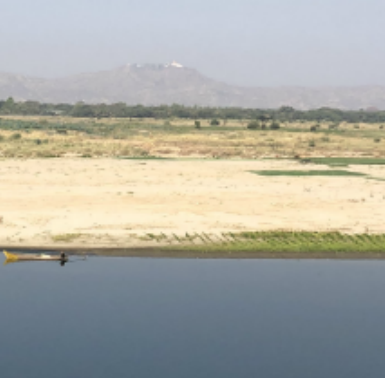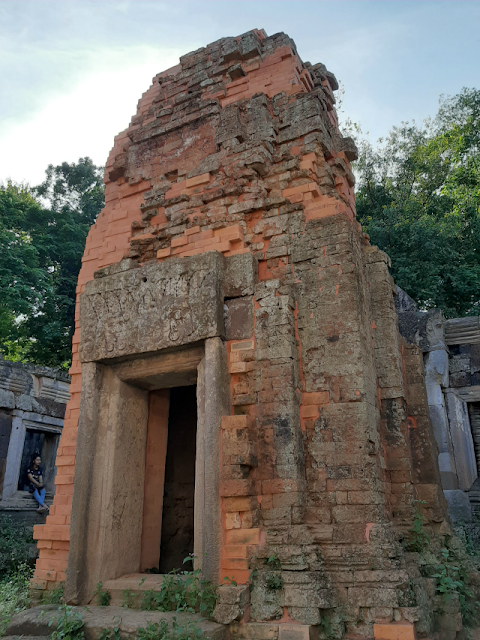About 20 kms south of Yangon, in the town of Kyauktan lies Ye Le Phaya or pagoda or Khaik Hmaw Wun pagoda. So named as it lies in the middle of water. The old Mon name of this pagoda was Khaik Hmaw Anawt but came to be known as Khaik Hmaw Wun pagoda after its location in Hmaw Wun creek, a tributary of Yangon river.


History and legend of pagoda:
Thanlyin or Syriam as it was known earlier has Myanmar's largest sea port called Thilawa. Major trade of the country is carried out from here. About 15 minutes away from Thanlyin is a small town, Kyauktan.
The pagoda was built by King Bawgsena in the 3rd century BC to enshrine Buddha hair and sacred relics there. After that, it has been repaired and additions made by 18 successive kings who ruled Myanamar.
entrance to pier
waiting for boat, the only way to reach the pagoda
big boat for foreigners
pagoda straight ahead
entrance of pagoda
at foot steps of entrance
Since the whole island is a temple complex, everyone is supposed to take off their footwear at entrance. You may leave it at the boat or may leave in a side corner where one pays the entrance fees.
guardians of pagoda
pagoda guardian
A chinthe guarding the pagoda.
Buddha image on top of main entrance
Pagoda is made of multi-tiered roof called
pyatthat which are beautifully decorated.
entrance to main shrine
flagstaff with hintha bird on top, ceremonial bells on the side
in front of entrance gate, richly decorated fine wood carvings
Buddha images on four corners, manusiha below, Thagyamin on side
Manusiha is half human and half lion figure very commonly seen in buddhist pagodas. Thagyamin, is the highest ranking nat and is derived from Indra, the Hindu god of rain.
Thagyamin
 Magnificent golden Buddha behind glass in an intricately decorated pagoda
Magnificent golden Buddha behind glass in an intricately decorated pagodaclose up of golden Ngasat Buddha image
another Buddha image behind glass
The glass makes it very difficutlt to get a clear picture
another Buddha in a corner
image of Buddha in a side room
It was a pretty sight to see small girls as nuns with alms bowl on their sides walking past the road
dried fish being sold in a shop
more fish
At the entrance, where passengers wait for the boats, there are small eateries.
Having a taste of palm fruit
scooping out coconut meat
more coconut meat left inside
According to belief,
- despite floods the water of river never enters the pagoda.
- the pagoda is never short of space and there is space for as many pilgrims or visitors who come there.
The pagoda has two special myths surrounding it, the water level will never rise to a level high enough to engulf the pagoda and that no matter how crowded it may be inside the pagoda, there is always room for visitors who come onto the island. At the pagoda, the visitors can set free the captive fish and feed the fish in the river.




















































































































